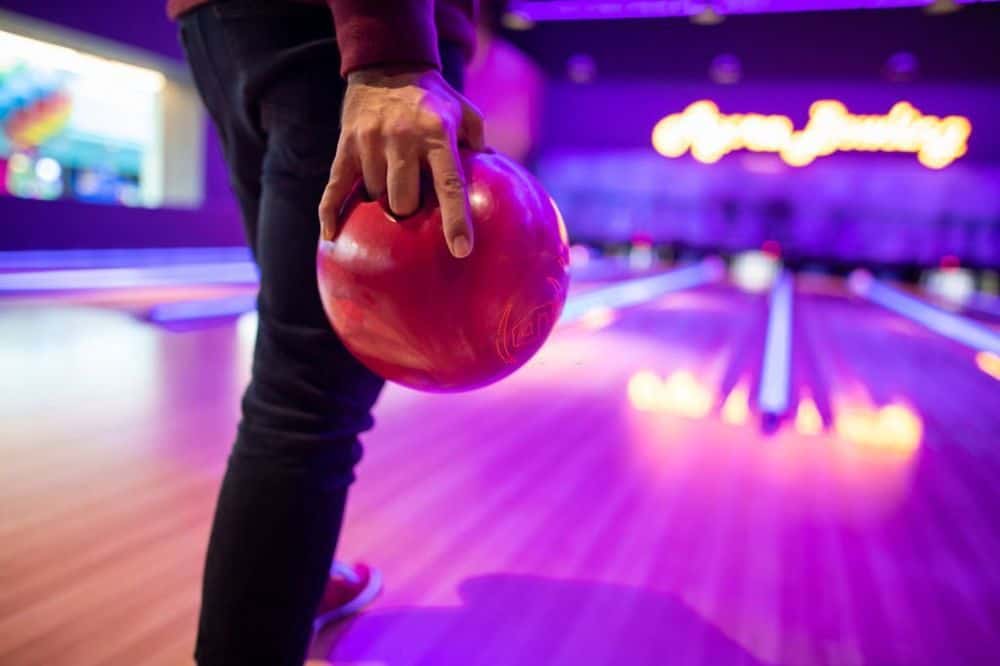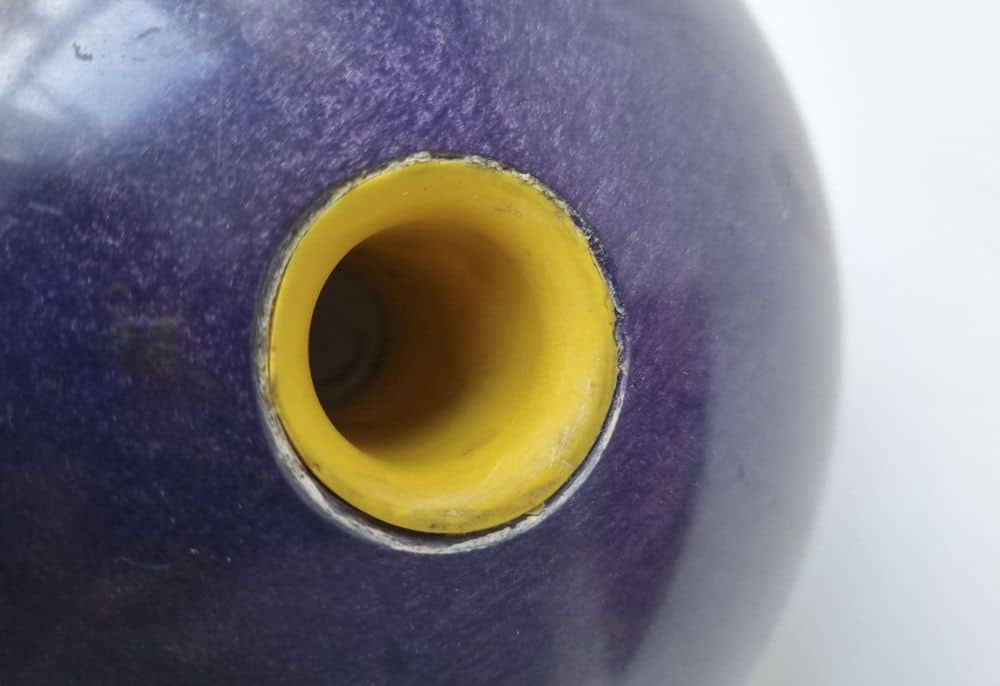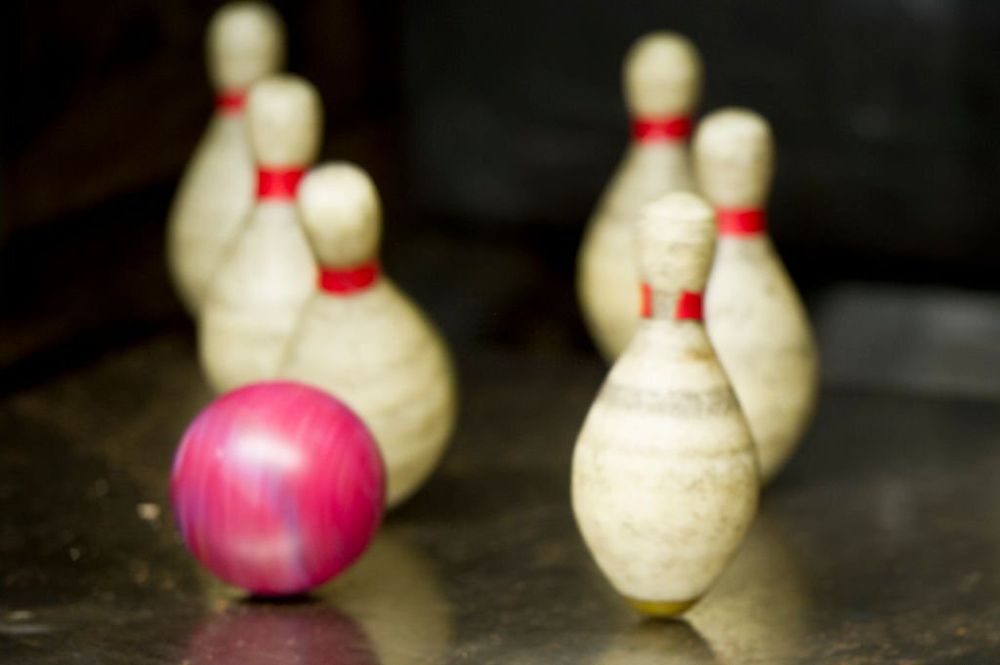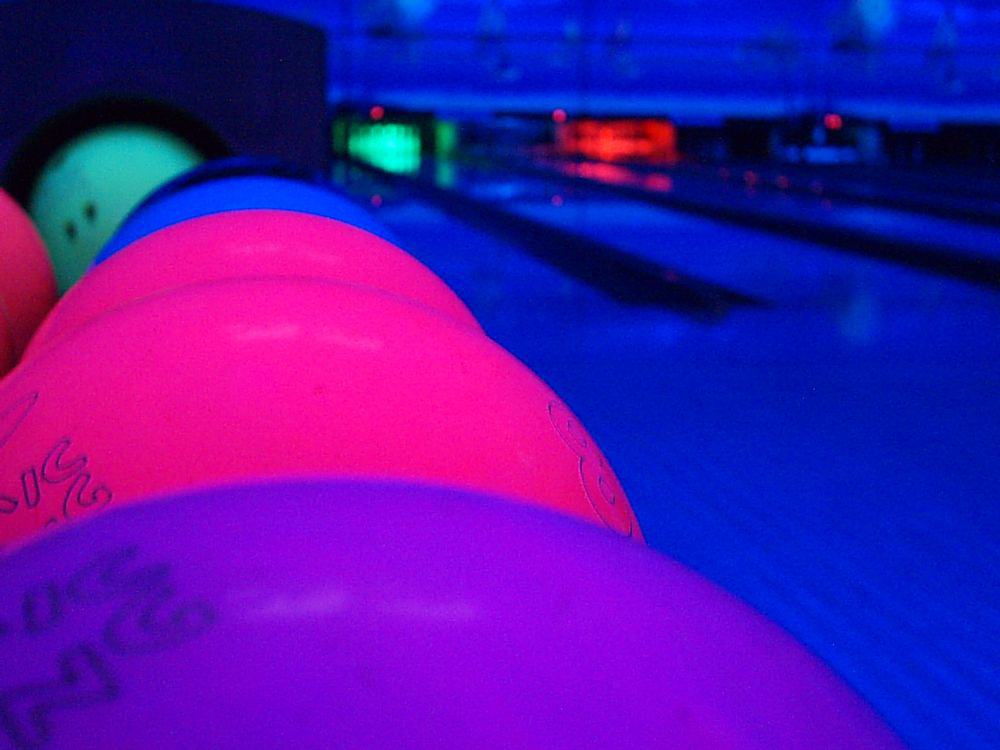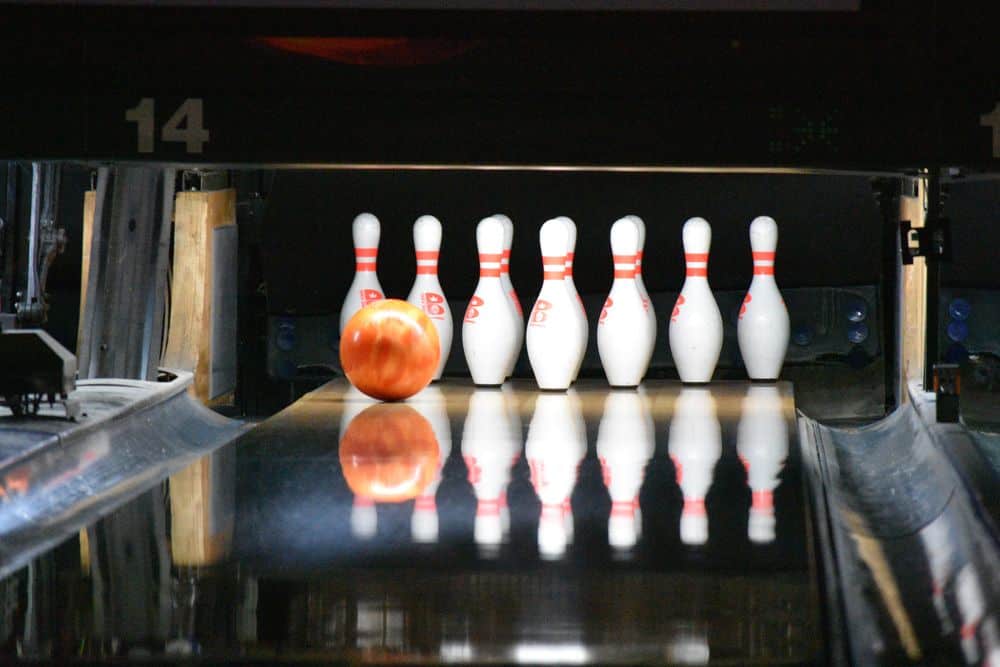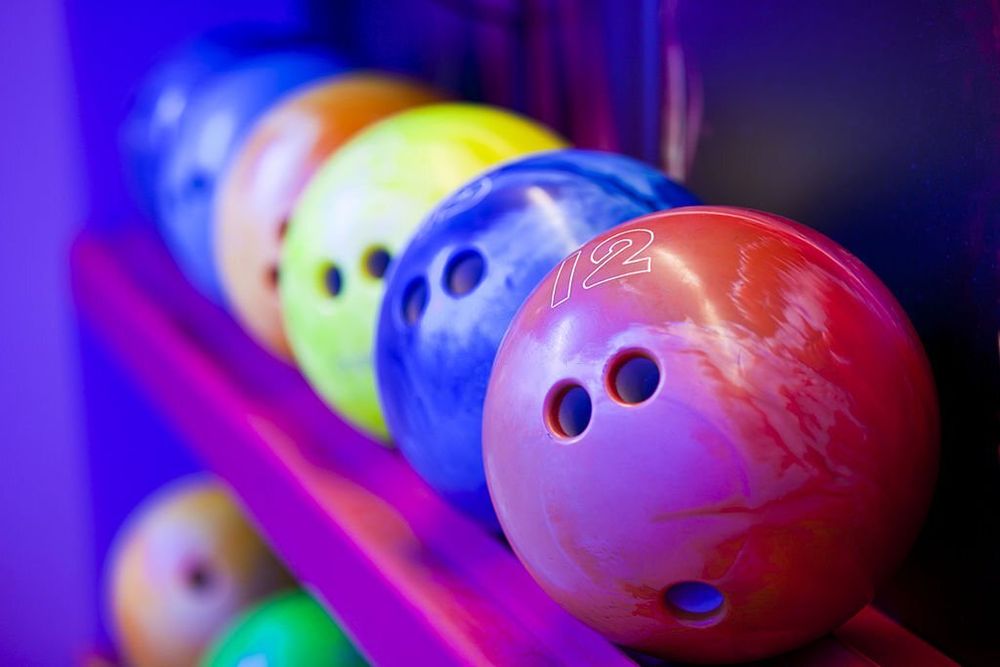First and foremost, a bowling ball is a round, heavy object that is used to knock down pins in the sport of bowling.
Bowling balls typically have three holes drilled into them, which are used to grip the ball and control its speed and spin.
But do bowling balls need to have three holes?
How many holes are within a bowling ball?
Usually, a bowling ball has three holes in it.
The first hole is for your thumb, the second hole is for your middle finger, and the third hole is for your ring finger.
If you put your fingers in the wrong order, the ball will not spin correctly, and you will get a lower score.
Within the field of the sport of bowling, please note that this only applies to a three-hole bowling ball.
By its definition, a bowling ball is a spherical object used to play the sport of bowling.
It is typically made of rugged synthetic material with three holes drilled into it.
The holes grip the ball and control its speed and direction when thrown.
Most bowling balls have three finger holes that are drilled into them.
In bowling, the size of the holes depends on the size of the bowler’s hand.
The thumb hole is usually the largest, followed by the two finger holes.
The ring finger is typically not used when gripping the ball.
Overall, the number of holes within a bowling ball does not affect its performance.
In bowling, it is purely a matter of preference for the bowler.
Some bowlers prefer to have four or five holes drilled into their ball, while others prefer just two or three.
Does a bowling ball have to have three holes?
Bowling balls come in all shapes and sizes; Usually, they have three holes while others only have five.
This difference in the number of holes within a bowling ball can affect how it behaves on the lanes.
The three-hole bowling ball is traditionally considered more stable since it maintains a more consistent speed throughout the turn.
It also tends to roll straighter due to the larger surface area in contact with the lane.
Two-hole bowling balls can be more responsive but may also be harder to control and more difficult to keep on the lane.
Hence, a three-hole bowling ball is probably the best option if you’re looking for a bowling ball with more weight and will stay on the lane longer.
But if you’re just looking for a ball that’s easier to control, then a two-hole bowling ball might be better.
As a general rule, the most common bowling ball has three holes, and most people agree that’s the minimum required.
Having three holes doesn’t mean a bowling ball is automatically bad.
Many bowlers prefer bowling balls with three holes because they offer better control.
Three holes are beneficial because they allow the ball to hook or bounce off the pins more easily.
This makes it easier to knock down the pins, and it’s one of the main factors determining a ball’s power.
So, if you’re looking for a bowling ball with good control and powerful strikes, choose one with at least three holes.
But why do some bowling balls have four holes?
The fourth hole is a thumb slug hole, which adds weight to the ball.
This extra weight can benefit bowlers who want more power behind their throws.
Thumb slug holes also help balance the ball’s weight, making it easier to control.
The four holes on a bowling ball are specifically designed to help the ball curve more easily.
With more holes, the ball can be twisted and turned as it is rolled down the lane, making it easier to hook the ball and send it down the lane for a strike.
Four holes make it easier to grip the ball and provide a better grip when it is bowled.
Another reason some balls have four holes is that it makes them easier to release.
As a bowler, ultimately, it comes down to what you think is best for your game.
But you might ask, why do bowling balls have holes in them?
There are several holes within a bowling ball for a few reasons. The first is to allow air to escape.
This is important because if the air pressure inside the ball is too high, it can cause the ball to burst.
Another reason for the holes is to allow the ball to “bounce” off the pins.
This is so that the ball doesn’t stay in one spot and keeps moving around, giving the opponent more opportunity to hit it.
The holes within a bowling ball also help control the ball’s spin.
When the ball is thrown with many spins, it will tend to hook or curve more.
Within the rules of bowling, if the bowler wants the ball to go straight, they will throw it with less spin.
The size and placement of the holes within a bowling ball can also affect its performance.
Overall, within bowling, a good rule of thumb is that the more fingers you can fit inside the hole, the more control you will have over the ball.
Can you bowl with two fingers?
Yes, you can bowl with two fingers.
Most people use three fingers when they bowl, but you can use two if you want to.
Within bowling, there are a few things that you need to keep in mind when you use two fingers, though:
- You must ensure that your middle and index fingers are not touching. If they are, it will affect your release, and the ball will not go where you want it to.
- You must ensure your thumb is not too far behind the ball. If it is, it will cause the ball to spin, and it will not be as accurate.
- It would be best to keep your wrist firm when you release the ball.
If you don’t, the ball will not have as much power and will not go as far.
What is a white dot bowling ball?
A white dot bowling ball is a type of polyester bowling ball that was first introduced in the early 1970s.
Within bowling, it gets its name from the small white dot placed on the ball to help aim.
Overall, the White Dot is the most popular polyester ball in history because of its consistent durability and color.
A White Dot bowling ball is a great option, whether a beginner or a professional.
Do all bowling balls have holes?
Are all bowling balls designed with holes? Surprisingly, the answer is no.
The holes found on bowling balls are actually for two reasons.
The first reason is to create a smoother roll for the ball.
The second reason is to allow the ball to travel straighter when thrown.
As always, within bowling, there are a few rare exceptions to the rule.
Many bowlers think a bowling ball must be drilled to be used in sanctioned competition, but this is not the case.
An undrilled ball is legal to use in sanctioned competition.
It must meet the balance requirement of no more than a one-ounce difference between any two halves of the ball.
Drilling a bowling ball can improve its performance in several ways, including making it harder and bounce higher.
However, it is not necessary to drill a bowling ball to make it legal to compete in sanctioned tournaments.
What is the space between the thumb and finger holes called?
Each point on the line between the thumb and the index finger is often referred to as the “thenar webspace.”
A certain web space looks like when a person is doing fine motor tasks is a good indicator of their motor control and muscle strength.
The thenar muscles are located just below the thumb, and they help us perform tasks like grabbing an object and moving it.
They also help us flex our fingers and control the movement of our hands.
Strong thenar web space muscles are necessary for many fine motor tasks, such as bowling, writing, and brushing teeth.
Weak thenar web space muscles can lead to difficulties with these tasks and other difficulties with hand-eye coordination.
What is considered an illegal bowling ball?
Illegal bowling balls can include anything from oversized rubber balls to those not covered as mandated in USBC regulations.
While oversized balls are not technically illegal, they can cause major problems for bowlers, as they can cause more balls to break than is necessary.
They can also cause more equipment damage and even be dangerous for spectators.
There are a few different factors that can make a bowling ball illegal.
The first is the weight of the ball. It must be between six and sixteen pounds.
As usual in bowling, the second factor is the size of the ball.
It must be between 8.595 inches to 8.500 inches.
The last factor is the type of material that the ball is made out of.
It must be made out of polyester, urethane, and resin.
If these factors are not met, the ball is illegal and cannot be used in competition.
Non-USBC-compliant bowling balls can also be a problem, as they may not meet the requirements mandated and implemented within the governing body.
This can lead to several penalties, including banning from sanctioned events.
Additionally, non-compliant balls may not be allowed in tournaments, severely restricting a bowler’s opportunities.
If you’re unsure whether a ball is legal or not, it’s best to consult with a professional.
Otherwise, in bowling, you could face fines or even be banned from bowling events.
Can you bowl with an undrilled bowling ball?
As long as bowling with a ten-pin ball, you could, in theory, bowl without touching the pins by making use of your palm to cover all of them.
Your palm would have to be in sturdy contact with the ball for this to be considered lawful.
However, as with anything in bowling, it is generally a good idea to use the holes in the bowling ball.
This is because Holes should be made available for holding as defined, mandated, and implemented within the laws of the USBC.
For this reason, in bowling, it would not be wise to develop a habit of not using holes while playing well.
Prior to the 1st day of August 2018, it was not a condition to implement the need to fill the boxers’ fingers before.
Professional ten-pin bowlers were instead allowed to use a “cradled hand.”
Their hands were positioned, so the ball was held between the thumb and the first two fingers.
This setup is not as comfortable as using the holes in the ball and is not as accurate.
With the advent of August 1st, 2018, the USBC mandated that all holes within a bowling ball must be used for gripping.
As a result, professional bowlers now use the holes in the ball.
Did bowling balls always have holes?
For centuries, bowling has been a popular pastime all over the world.
But did you know that bowling balls didn’t always have holes? It wasn’t until the late 18th century, specifically in 1894, that bowlers started drilling holes into their balls.
So why did they start doing this? One theory is that it made the ball easier to grip and throw.
Another theory is that it made the ball more aerodynamic, helping it to travel faster and further down the lane.
Whatever the reason, there’s no denying that drilled balls have revolutionized the sport of bowling.
Today, almost all professional bowlers use balls with holes – and many amateurs do too!
Conclusion
In conclusion, a bowling ball does not have to have three holes.
However, it is generally recommended that beginners use a ball with three holes.
This will help them to get a feel for the game and learn the proper techniques.
Still, it is up to the bowler to decide which type of ball they prefer.

